다음은 GitHub의 Earth Engine 데모 디렉터리에 있는 예시를 설명합니다. 각 예시의 제목은 GitHub의 소스 링크입니다. 예시는 Earth Engine으로 인증하는 방법에 따라 정리되어 있습니다. 인증 옵션 및 이러한 애플리케이션을 배포하는 방법에 관한 자세한 내용은 App Engine 및 Earth Engine 개요를 참고하세요.
서비스 계정을 사용하여 인증
server-auth-python
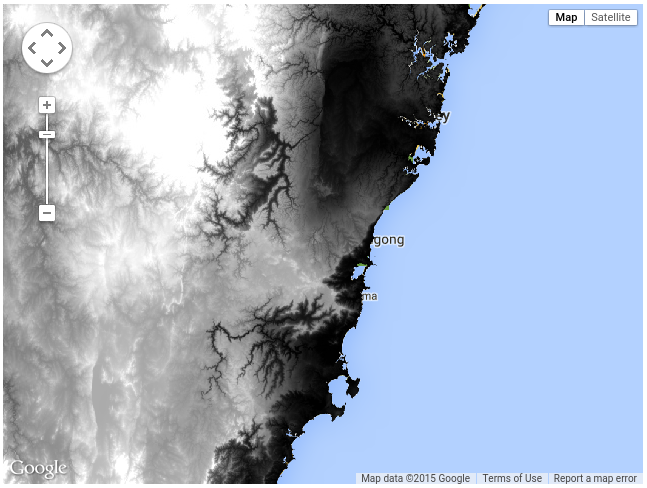
시작하려면 이 예시를 App Engine 플랫폼의 Earth Engine 애플리케이션의 'Hello World'로 생각해 보세요. 앱은 Earth Engine 이미지(SRTM 고도)가 포함된 양방향 지도를 표시합니다. config.py 파일을 검사합니다. 이 파일은 프로젝트의 서비스 계정 사용자 인증 정보로 수정해야 합니다. 유일한 Earth Engine 관련 코드는 server.py에 있습니다 (2줄). Earth Engine은 앱 페이지에 표시할 이미지의 mapid를 가져온 다음 이 값을 페이지 렌더링에 사용되는 Jinja 템플릿에 전달합니다.
server-auth-nodejs
위 예와 동일하며 대신 Node.js를 사용합니다. server.js 파일은 .private-key.json 파일에서 서비스 계정 사용자 인증 정보를 로드하고 앱 페이지에 표시할 이미지의 mapid를 가져옵니다.
trendy-lights

다음은 서버 인증을 사용하는 더 복잡한 예입니다. 지도에 여러 다각형을 추가하여 사용자가 다각형을 클릭하면 다각형에 관한 세부정보를 표시합니다. 차트 표시에는 Google Visualization API를 사용하고 페이지를 새로고침하지 않고도 서버에서 새 데이터를 가져오는 AJAX라는 기법을 사용합니다.
cloud-functions
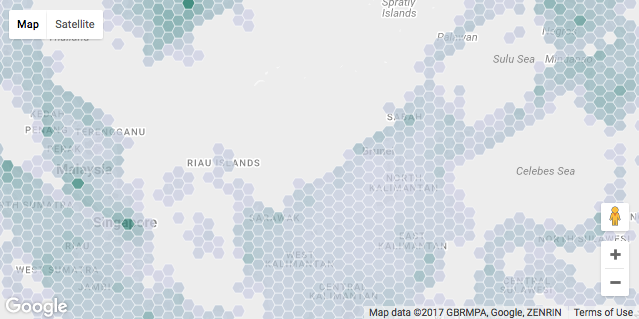
이 예에서는 서버 인증에 Node.js Cloud 함수를 사용합니다. 이 함수는 Earth Engine API 및 TurfJS를 사용하여 hexbin 시각화를 위한 GeoJSON을 만듭니다. 웹페이지는 정적이며 (Cloud Storage에 호스팅됨) 지도에 hexbin 시각화를 표시합니다. 이 데모는 다른 예시와 달리 App Engine을 사용하지 않습니다.
OAuth2를 사용한 인증
client-auth
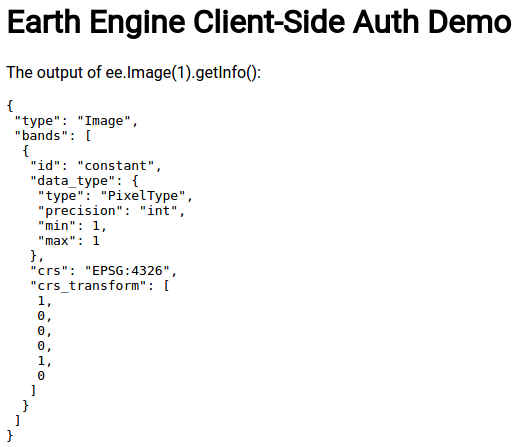
이 예에서는 클라이언트에서 인증하는 OAuth 흐름을 보여줍니다. 특히 사용자가 앱을 사용하려면 본인으로 인증해야 합니다 (즉, 이미 Earth Engine 사용자임). 이를 위해 JavaScript 출처와 승인된 리디렉션을 개발자 콘솔에서 설정해야 합니다.
map-layer
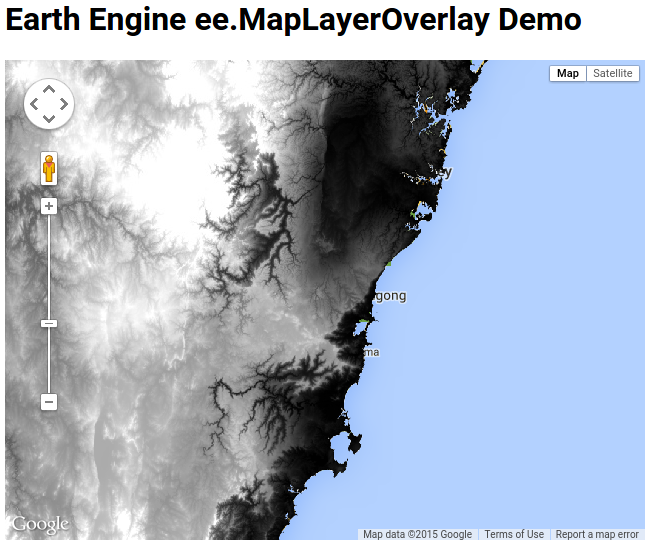
이 예에서는 클라이언트 승인 흐름도 사용합니다. ee.MapLayerOverlay를 사용하여 콜백 함수와 함께 지도에 Earth Engine 데이터를 추가하고 로드된 타일 수를 추적하는 방법을 보여줍니다. 이 데모의 모든 매핑 기능은 서버 인증 데모에서와 같이 서버에서 생성된 mapid로 실행할 수 있습니다.
polygon-drawing
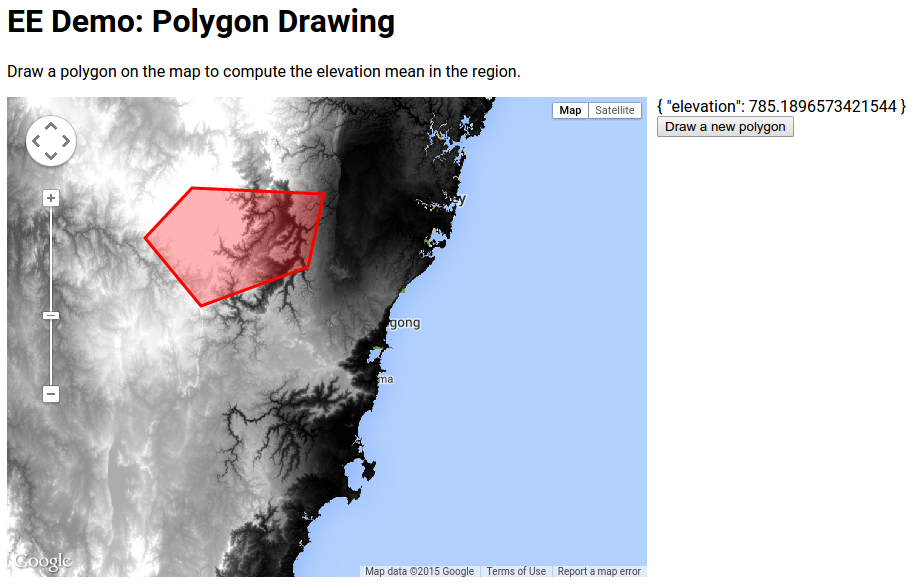
이 예에서는 클라이언트 승인 흐름도 사용합니다. 이 예에서는 지도 위에 다각형을 그리고 Earth Engine에서 다각형을 사용하여 지역 축소를 실행하고 다각형 평균을 표시하는 기능을 보여줍니다. 이 데모의 모든 매핑 기능은 서버 인증 데모에서와 같이 서버에서 생성된 mapid로 실행할 수 있습니다.
export-to-drive
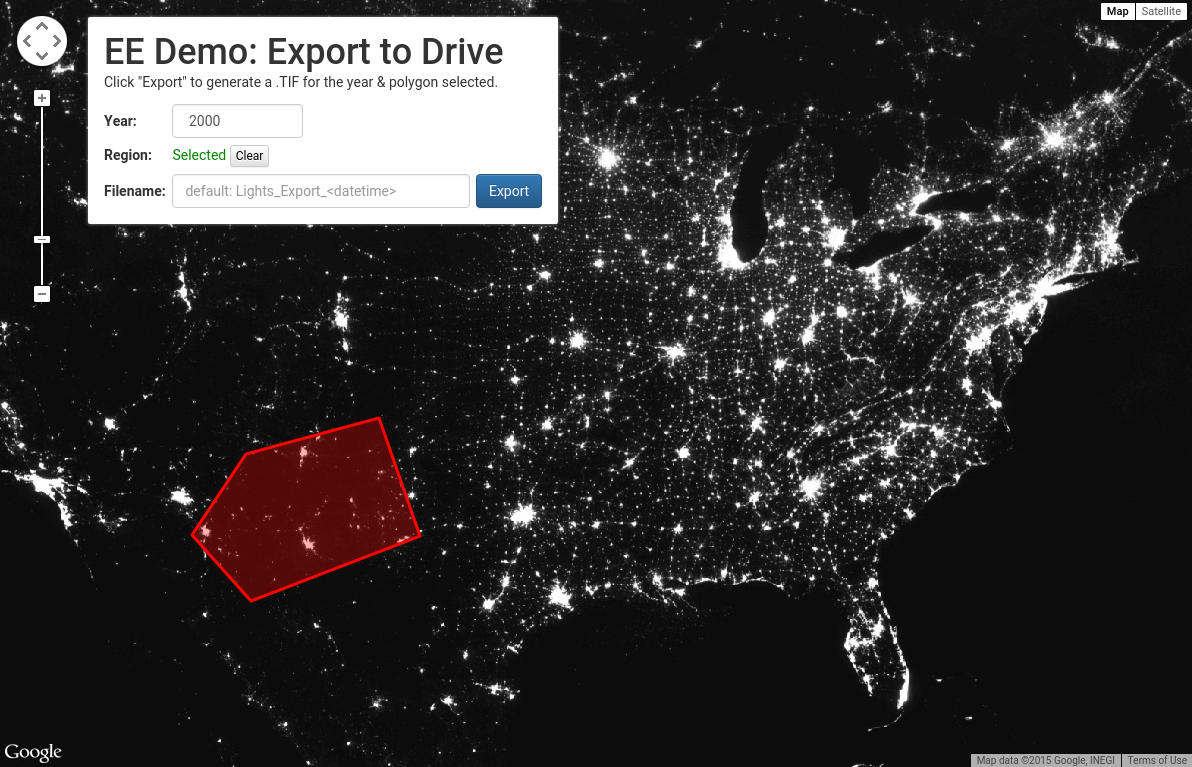
비교적 복잡한 예입니다. 애플리케이션의 사용자 인증 정보를 사용하는 Earth Engine용 인증 흐름과 사용자의 개인 사용자 인증 정보를 사용하는 Google Drive용 인증 흐름 등 두 가지 인증 흐름을 사용하는 방법을 보여줍니다. 이를 통해 사용자는 레이어를 선택하고 다각형을 그리고 다각형으로 잘린 레이어를 Drive로 내보낼 수 있습니다.
